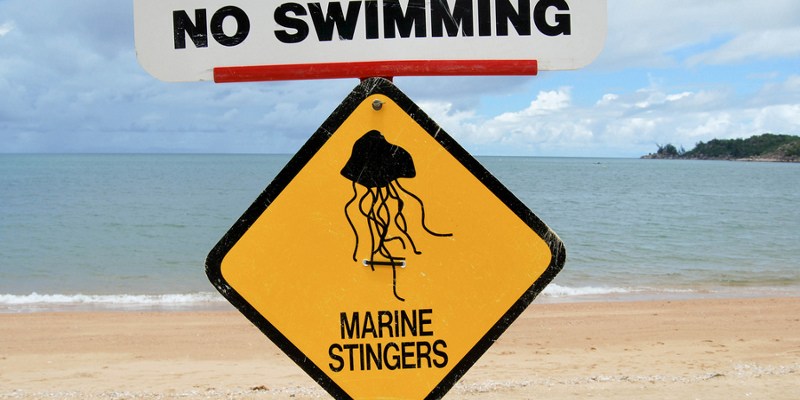It is difficult to know the precise months in which box jellies occur in large number in the Australian waters, but the months of October to November and April to May are the peak seasons of marine killers. In the northern Australia, box jellyfish probably emerge in October with the arrival of winter season and ends at the start of summer months. However in the northern Western Australia and northern Queensland the summer months ranging from November to March appear to be quite heavy with jellies.
At the beginning of the year box jellyfish come out in large numbers in areas that are closer to equator. However in the tropical waters jellyfish crop up in the later months. Having said so, smaller box jellyfish occur in Darwin in August each year. Jellyfish found in Queensland are twice the size of those found in Darwin. Generally largest jellies are thought to emerge early in the season.
Box Jellyfish Season Australia
The southern Australia may host some jellies in June when the box jellyfish season ends. Therefore, the visitors must take heed to local warnings even when the season ends for it’s unreasonable to assume that jellies disappear absolutely in the offseason.
Similarly in the Northern Territory, box jellyfish sting are reported all throughout the year. In Queensland, June and July have the least occurrence of jellies in water.

Jellyfish Season in Kewarra
People who trip to the Great Barrier Reef often visit Kewarra Beach. The Kewarra Beach is located at the coastal suburb of Cairns, Australia. Every year the beach hosts thousands of visitors from around the world. However they are not alone in these coastal waters—not at least in February to March. Box jellyfish love to swim in these shores. They would hardly go farther from the coastal waters. Therefore, people must take all precautionary measures including local guides so that they know what’s coming.
 In the Kewarra Beach, the authorities have installed stinger nets in the coastal waters so that people can swim in the net. It’s a swimming enclosure that excludes marine stingers. Still these enclosures are not (always) absolutely jelly-free and the authorities recommend wearing swimming suits even in the nets. Yet the swimming suit does not cover your hands, face, and feet so it’s probably better to be aware of the warnings or conditions. In the extreme cases when you’re told that jellies present in water, do not swim.
In the Kewarra Beach, the authorities have installed stinger nets in the coastal waters so that people can swim in the net. It’s a swimming enclosure that excludes marine stingers. Still these enclosures are not (always) absolutely jelly-free and the authorities recommend wearing swimming suits even in the nets. Yet the swimming suit does not cover your hands, face, and feet so it’s probably better to be aware of the warnings or conditions. In the extreme cases when you’re told that jellies present in water, do not swim.
Whitsunday Island
During early months the Whitsunday Island is possibly occupied by the box jellyfish for these waters are not really far from shore. The occurrence of jellies may be greater soon after the strong rains as things wash out from the estuarian waters. These marine stingers can certainly be avoided with reasonable precautions.
Probably Precautionary Measures
The last thing you want during swimming is to get stung by the most venomous marine invertebrate, box jellyfish. Therefore following measures are recommended in order to be on the safer side.
- During the wet season one must not swim without swimming suit and outside the swimming enclosures. These measures should be taken even during the warmer months when waters have least occurrence of jellies.
- In the Australian beaches the authorities have installed flags—a point beyond which the jellies are likely to occur. It’s advisable to swim within these flags.
- It is best to swim in the stinger nets because they offer higher degree of reasonable, but not absolute, assurance.
- Visitors must not ignore the local warnings or signposts.
- Warmer months are better for swimming.
- Never sit on the stinger nets.
- If you find a marine singer being washed out on the beach, do not touch it for it can still sting.
- Always take vinegar with you because it’s the best possible course of action immediately after the sting. The use of vinegar has saved thousands of lives of unfortunate swimmers.
- Try to move slowly into the water because marine stingers swim away as you go in.

Leave a Reply